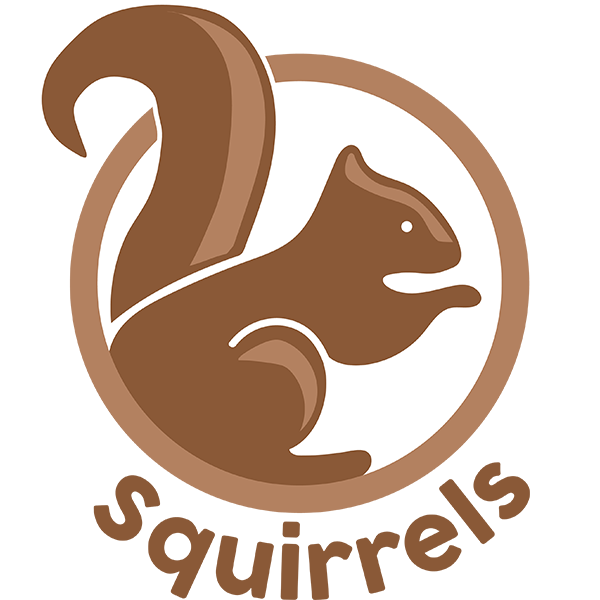Submitted By:
Jessica Ross, North Cove Elementary
Overview
Teacher will introduce the Project Squirrel activity, beginning with a read aloud of the humorous story, Those Darn Squirrels, by Adam Rubin. Students will gain an understanding of how squirrels affect the local ecosystem and ways students can contribute to the wellbeing of the community’s natural environment by providing squirrel population data to scientists.
Grade Levels
3rd
Curriculum Correlation
3.C&G 2.2 Exemplify how citizens contribute to the well-being of the community’s natural environment.
Duration
60-90 minutes
Location
Indoor and Outdoor
Materials
● Those Darn Squirrels by Adam Rubin
● Science Notebooks
● Camera or other picture taking device
 Learning Targets
Learning Targets
 Educators Information
Educators Information
Squirrels play a significant role in our local ecosystem. Squirrels are one of the most
important animals responsible for forest regeneration.
There are many factors contributing to high efficiency of forest regeneration by grey
squirrels (Sciurus carolinensis). The first factor in the grey squirrels’ success in forest
regeneration is the huge amount of tree seeds they bury. Research has shown that grey
squirrels store most (96.9%) seeds in this way. Scientists also managed to establish that
about 30% of the buried seeds will never be recovered by grey squirrels. These buried and
unrecovered seeds are the basis for the future forest regeneration.
Another factor of grey squirrels’ (Sciurus carolinensis) high efficiency in forest regeneration
is the quality of seeds they bury. The study results have shown that grey squirrels eat first
the seeds which are damaged (infested, rotting, etc. – which would not germinate for the
most part anyway) and they bury healthy seeds “helping forest regeneration to even greater
extent than it was thought so far(1)”.
The researchers also point out the fact that grey squirrels (Sciurus carolinensis), by eating
larvae and insects that attacked seeds, prevent in a very important way the negative effect
of seed damage (by larvae, insects, etc.) on forest regeneration and condition.
Most of the scientific research on trees dispersal note the fact that the quality of distributed
seeds has a paramount influence on a successful process of tree dispersal hence the
selective burying of healthy seeds (and eating the damaged ones) makes this animal an
unrivalled leader in forest regeneration.
Grey squirrels (Sciurus carolinensis) also surprised scientists with the efficiency of
recognising damaged seeds from healthy ones. It turned out that grey squirrels were in over
45% of cases more efficient in detecting infested and healthy seeds than scientists equipped
with laboratory instruments SIC!
Scientific research are also getting support from environmentalists who observe a
significant increase in young trees in the areas inhabited by grey squirrels (Sciurus
carolinensis).
Unfortunately due to inconsiderate human activities in many areas the grey squirrel population is quite seriously threatened. Already many environmentalists and scientists
bring our attention to the fact that there is significant deficiency in natural forest regeneration in those areas where grey squirrel population has declined in the recent decades.
Source: ICSRS: Squirrels and Forest Regeneration http://i-csrs.com/squirrels-and-forest-regeneration
 Procedure
Procedure
Engage:
Read aloud Those Darn Squirrels by Adam Rubin. Begin a class discussion about what
students know about squirrels and allow students to share personal experiences with
squirrels. What were the realistic facts about squirrels in the story?
Explore:
What would happen to our local ecosystem if there were no squirrels? Take students on a
nature walk around the school campus. Have students look for squirrels or evidence of
squirrel activity. Students could write notes in a science journal or take pictures with Ipads or
other device.
Explain:
Explain to students that they will be conducting a citizen science project to help scientists by
contributing their observations about the local squirrel population to a central database.
Use Educators Information to share with students how squirrels impact local ecosystems.
Draw a cycle or flow map that illustrates how the trees produce fruit and seeds which the
squirrels then disperse to create more trees.
Elaborate:
Allow students to share journal entries and pictures. Point out student work samples that
show the quality of observation and work the teacher is expecting. Model a journal
entry/observation for students. Students copy the model in their journals.
Evaluate:
In the story, Those Darn Squirrels, the old man sees the squirrels as a nuisance. With a
partner, write a letter to Old Man Fookwire and explain to him how squirrels help our local
ecosystem.
 Extensions
Extensions
This book could also be used to show examples of 3rd grade physics concepts of push, pull
and force.
 Resources
Resources
● YouTube read-aloud of Those Darn Squirrels: https://www.youtube.com/watch?v=giviXWD67FY
● Free Squirrel Research Unit: http://lastingthumbprints.com/free-squirrel-resource-unit/



Leave a Reply
Want to join the discussion?Feel free to contribute!